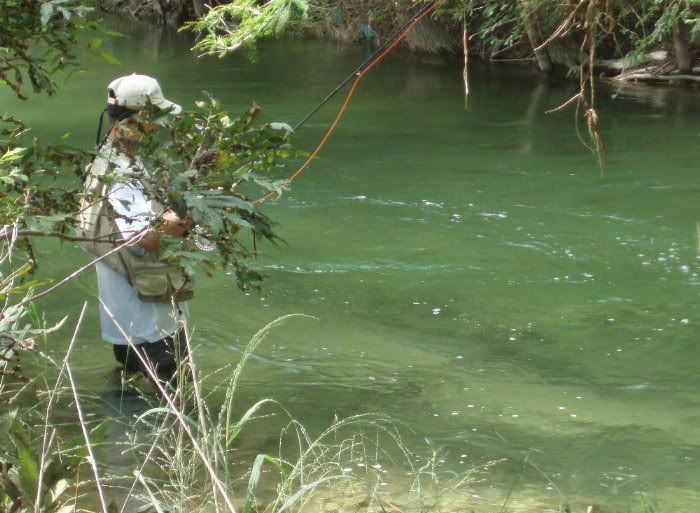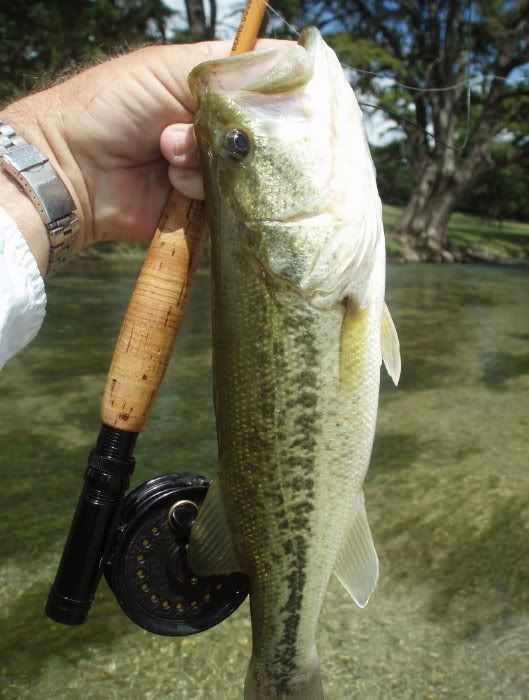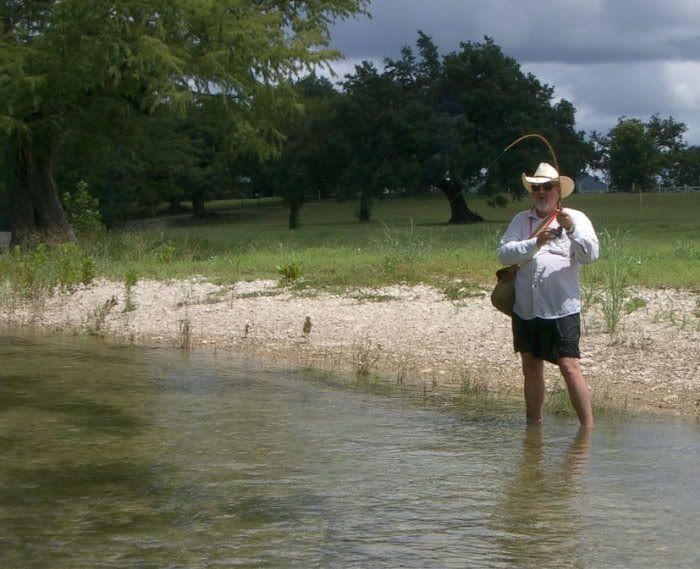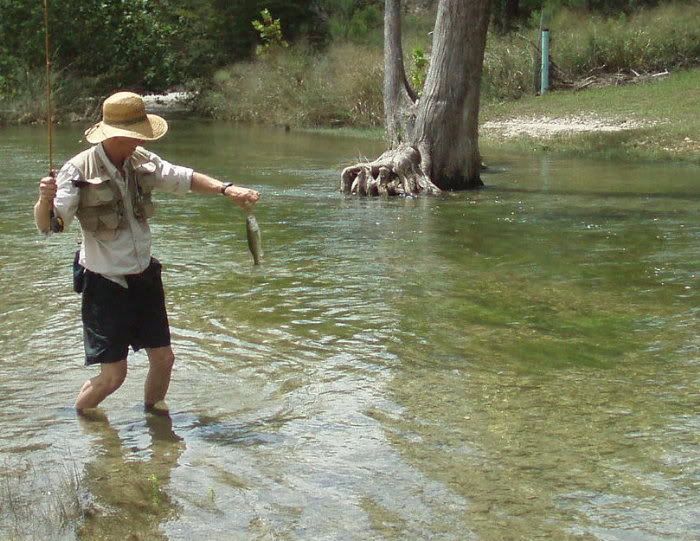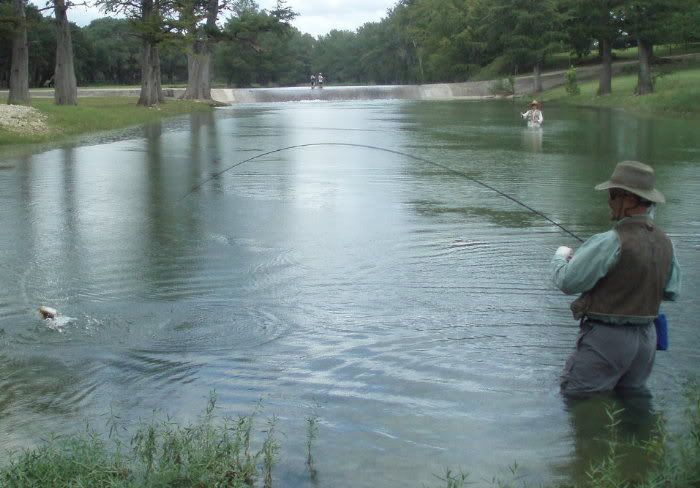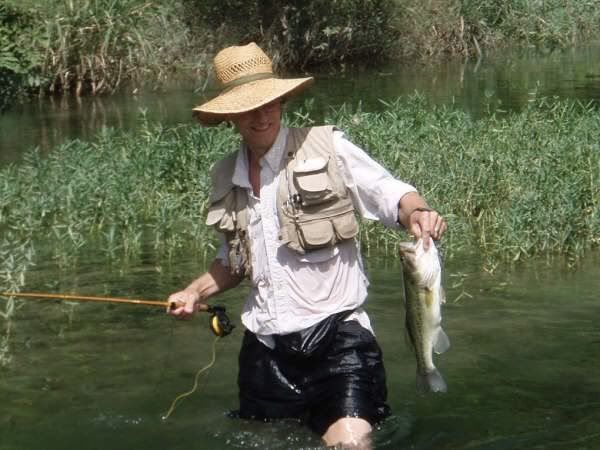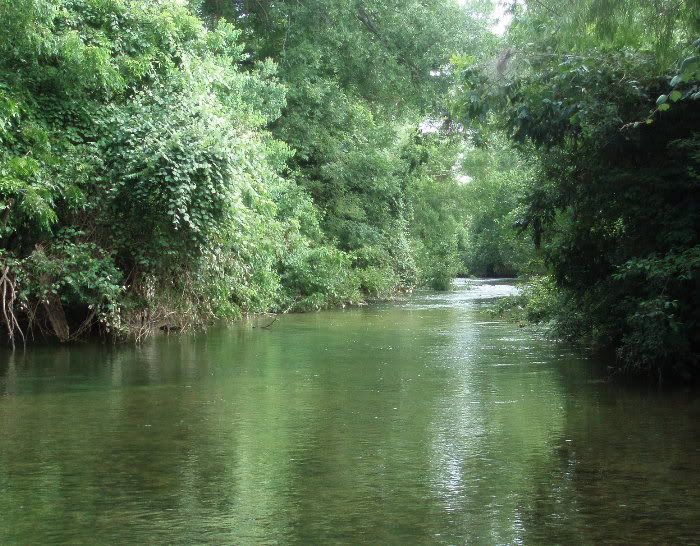our bass are lean and racy. These fish were acting like trout in calf-deep riffle water, and going to the trouble to munch damselflies. I call them Texas brook trout. The shallows were thick with minnows, some to 2", but most under 1/2", and clouds of tiny ones. Nickel-sized crayfish are also abundant, and scuds in the ruella. A size 8 streamer looks big here (but worked). (I was catching stripers in our tailrace a month ago on size 10 streamers, and they wouldn't touch a size 8.) I have also caught river bass on swinging BWOs and tricos during a hatch. (In the middle Guad a few years ago, I caught a 4-lb. smallie on a size 10 streamer.) At the same time, last weekend, if you hooked up a bluegill, the bass would swallow it. The limestone rivers are rich, but the fare is small. The tiniest pools can hold big fish, and always hold nice pods of bass. There are no pelagic fish like shad. There's not enough water for pelagic fish, except in the reservoirs. (for me, its too hot here to fish from a boat.)
At the headwaters of the Guadalupe, the river can go for a mile less than ankle deep, then drop into a knee-deep pool. The mile feeds the pool, and the pool can hold 50 bass. It's a fly-fisher's paradise.
headwater springs of the Guadalupe
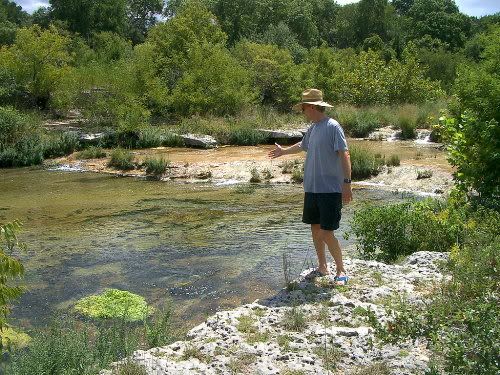
The river we were fishing last weekend is 12 miles down from its headwater springs, and the flow where we were was about 150 cfs - this is a particularly
wet year. We were one week behind a tropical storm and its runoff.
We saw a pair of bald eagles. Life is tough.
The hybrid genetics of these fish include some our endemic river bass, and visibly they show stocked largemouth genetics, as well. They're adapted for the bright limestone bottom. On the (smaller) A-strain endemic bass photo above, you can see the smaller head relative to the body mass.
I will admit, most days we are delighted to catch 12" bass, and 15's are lunkers. This was a particularly good day for us with large fish.
Oh yeah, a couple of years ago, a 40-lb. striper was taken in our tailrace on a san juan worm.
Based on the writings of the Spanish colonists, native Rio Grande cutthroats lived in the TX hill country 250 years ago. One of our good droughts finally wiped them out, and the endemic bass (along with redhorse suckers) occupy that niche now. From impoundments, stocking and experiments of biologists in the 70s, now largemouth genetics dilute the endemic bass, and smallmouth stockings have made them extinct in at least one watershed.
I'm fond of the endemic bass

there's something very special about the creek where this little guy lives.
Endemic Guadalupe bass and wild (once stocked) largemouths live side-by-side without hybridizing.

